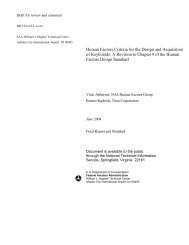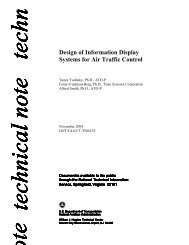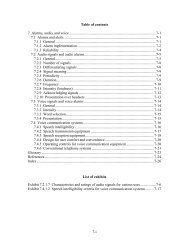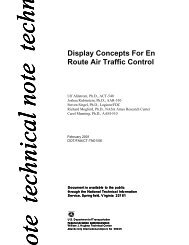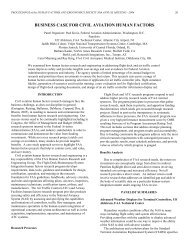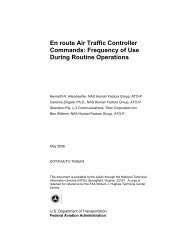Chapter 14. Anthropometry and Biomechanics - FAA
Chapter 14. Anthropometry and Biomechanics - FAA
Chapter 14. Anthropometry and Biomechanics - FAA
You also want an ePaper? Increase the reach of your titles
YUMPU automatically turns print PDFs into web optimized ePapers that Google loves.
HFDS 2003 (amended Oct 2009)<strong>Chapter</strong> 14 <strong>Anthropometry</strong> <strong>and</strong> biomechanicsPercentile value (or point) of the selected datum - The percentage of data that fall at orbelow a specific datum value.Phalanges - The name commonly given to the bones that form the fingers <strong>and</strong> toes.Pronasale - The tip of the nose.Pronation - The downward turning of the palm.Proximal - Closer to the trunk (torso).Proximal interphalangeal joint - The joints between the first <strong>and</strong> second phalanges.Seat reference point - A point in the mid-sagittal plane where the seat back <strong>and</strong> seat panintersect.Sellion - The nasal root depression between the eyes.Static strength - Also known as isometric strength, which is steady force exerted while thelimbs are in a stationary or static position.Stomion - The midpoint of the lips.Stylion - The most distal point on the styloid process of the radius.Supination - The upward turning of the palm, or lying face up.Suprasternale - The lowest point of the notch in the upper edge of the breast bone.Tragion - The cartilaginous notch at the front of the ear.Tremor - The oscillation of a body extremity which may occur along with an effort tomaintain a fixed position or direction. The degree of tremor is measured by the distance ornumber of departures from the fixed path or position per unit of time. A tremor increaseswhen (1) effort is made not to tremble <strong>and</strong> (2) fatigue is present. It is greatest in verticalmotion, less in front-to-back motion, <strong>and</strong> least in side-to-side motion.Trochanter - One of the bony prominences on the upper end of the femur (the thigh bone).The greater trochanter, used in these measurements, is the broad, flat protrusion on the femur,at the upper end of its lateral surface.Ventral - Toward the front of the body.14-57



